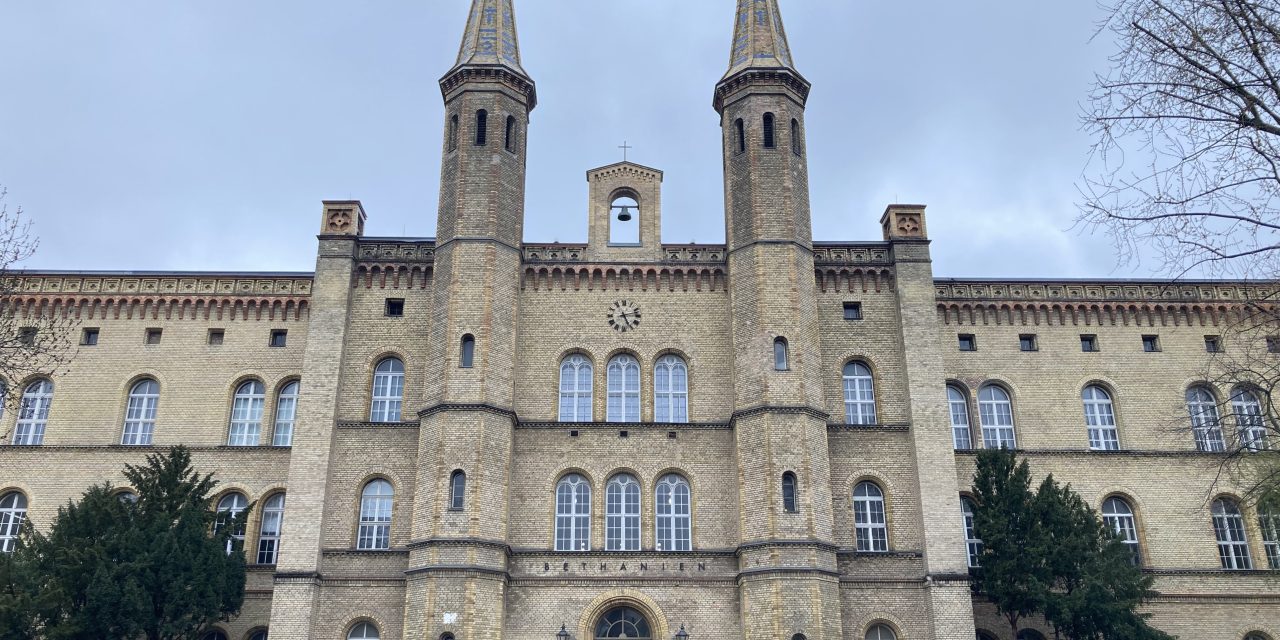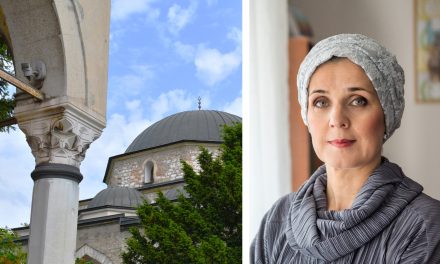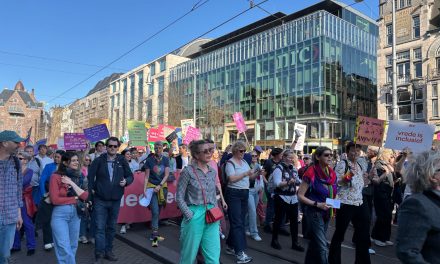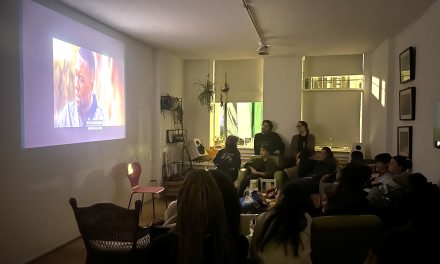Berlin has become known as a major art hub, attracting artists and art lovers on a global scale, but the rising prices of rent paired with low income have turned the once cheap and accessible city into an unaffordable location.
Emanuele Crotti, an artist currently living in Berlin, says he feels as though the art community in the city has become much less connected over the last decade with rising expenses.
Crotti initially studied and worked in theatre production, but later found his passion for visual arts after participating in making set designs for stage shows. After moving to Berlin, Crotti began creating large installations made of cloth and paper which he would then set on fire. His intention was to capture the concept of time in his work. Once the pandemic began and creating interactive artworks was no longer possible, Crotti transitioned into producing abstract drawings and paintings.
Crotti’s studio is located in the basement of Kunstquartier Bethanien, a historic hospital built in the 1840s which was later closed down in 1970 due to its proximity to the Berlin Wall. According to the Kunstquartier Bethanien Berlin website, the building was reopened in 1973, creating a space for “creative, artistic and social institutions”. The community centre is located in Kreuzberg, one of the most highly populated artist’s districts in Berlin.
He first moved to Berlin 12 years ago from Milano, Italy in search of cheaper studios and a new art community to join. According to the study “The Situation of Berlin’s Artists and the Gender Gap,” facilitated by Institut für Strategieentwicklung (IFSE), “For 80 percent of the artists [in Berlin], affordable rents are the most important factor…The biggest concern is that rental prices are rising disproportionately compared to low incomes”.
According to Housing Anywhere’s International Rent Index by City, as of 2021, Berlin is the sixth most expensive city for renting in the world. The Economics Review states that Berlin’s rent has increased by “85 percent between 2007 and 2019, impacting the population of which 80 percent rent their homes”. The article continues, declaring that prices for housing in Berlin have rose nearly 40 percent between 2020 and 2021.
Stephane Bauer, the Director of the Kunstraum Kreuzberg/Bethanien and the Department of Culture and History Friedrichshain-Kreuzberg says the artist community is mainly being effected by economic issues.
The Kunstraum Kreuzberg/Bethanien presents group exhibitions around 6 times a year, curated by both in-house and outside art curators, local artists, and institutions in an attempt to create a more diverse body of work. According to Bauer, the organization does not put on exhibitions with the intention of selling artworks but as a form of cultural education. “We’re a non-profit so it’s more to create that discourse, to create themes and a reflection of the art”.
Bauer says that one major societal aspect effecting Berlin’s visual art scene is the dramatic increase of rent within the city which forces artists to change their ways of producing artworks and limits their level of security. “It’s not anymore, the classical situation where an artist arrives in Berlin, rents a studio, works there and then exhibits. Now it’s more improvising”.
Bauer says that there are no longer affordable spots for artists to stay put and only very successful artists tend to be able to pay rent in the city centre.
The lack of affordable or quality workspace in Berlin has caused the flow of new artists into the city to slow down. “It was growing and it grew from 2000 on until around 2015 and the last eight years I think a lot of artists were forced to move to smaller cities or even back to the places they came from so there was a large movement because making enough to afford a studio or even an apartment was not that easy anymore”.
Along with rising of rent prices in the city, another economic issue effecting the visual art community is the low income in Berlin. The IFSE study states, “only 24 percent of men and 19 percent of women participating in our survey were able to cover their living expenses almost completely or completely through their artistic practice”.
“Berlin has also always been cheaper than other capitals around the world and that is changing. Artists cannot afford expensive materials because they know that if they sell it [their artworks] in Amsterdam, they can sell it for 1000 euros, but if they sell it in Berlin, they can sell it for 200 euros,” says Crotti.
Crotti says that he will most likely leave Berlin within the next ten years in reaction to the declining artist community. He continues stating that if the city of Berlin began to open up more abandoned buildings as art studios to facilitate the building of relationships in the artist community with cheap and accessible workspaces he would consider staying in the city.
Emanuele Crotti, works as a visual artist in Kreuzberg, one of the most populated artist districts in Berlin. He discusses the history of the building his studio is located in as well as how lucky he feels to have a space there. With the rising rent prices in Berlin, Crotti says he feels as though he is very fortunate to have a studio in a city run foundation building as the rent is low in comparison to many others working in the city centre.




